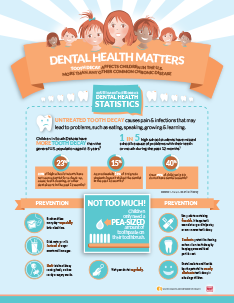If you feel an abrupt jolt of pain or see a tooth injury, it can be unsettling. But how do https://www.wtaj.com/studio814/sponsored-content-power-swabs-teeth-whitening-treatment-is-as-easy-as-snap-swab-and-smile/ establish if it's an oral emergency that needs instant focus? Comprehending the critical indications and recognizing when to look for aid can make all the difference in protecting your dental health and wellness. Recognizing when to act swiftly might mean the distinction between a quick fix and much more extensive therapy.
Common Kind Of Dental Injury
What're the usual kinds of dental trauma that you should understand?
Mishaps can happen, leading to various kinds of dental injuries. One typical sort of oral injury is a broken tooth. This can take place from biting down on something tough or experiencing a strike to the face.
An additional kind is a busted tooth, where a part of the tooth can chip off. Additionally, you may experience a knocked-out tooth, which can happen throughout sports or falls. It's critical to handle the tooth meticulously and seek instant oral focus.
Dental trauma can additionally include a tooth that has been pushed out of position or loosened up as a result of an injury. This sort of injury calls for punctual therapy to conserve the tooth.
Last but not least, soft cells injuries in the mouth, such as cuts, can additionally take place from mishaps. Knowing about these typical sorts of dental trauma can assist you act promptly and suitably in case of an emergency.
Indications of Dental Emergency Situations
Identifying the indications of dental emergencies is essential for punctual action and correct therapy. If you experience severe tooth pain that's constant and throbbing, it might show an underlying concern that requires instant attention.
Swelling in the periodontals, face, or jaw can likewise suggest a dental emergency situation, particularly if it's accompanied by discomfort or fever. Any sort of trauma to the mouth resulting in a cracked, damaged, or knocked-out tooth must be dealt with as an emergency to stop further damages and possible infection.
Bleeding from the mouth that does not stop after using stress for a couple of minutes is one more red flag that you must look for emergency situation oral treatment. Furthermore, if you notice any kind of indications of infection such as pus, a foul preference in your mouth, or a high temperature, it's vital to see a dental expert asap.
Overlooking these indicators might lead to more major problems, so it's critical to act promptly when faced with a possible oral emergency situation.
Importance of Immediate Treatment
Prompt action and immediate therapy are crucial in attending to dental emergency situations to prevent more difficulties and make sure optimum outcomes for your dental health and wellness.
When confronted with an oral emergency situation, such as a knocked-out tooth or severe tooth pain, looking for immediate treatment can make a substantial difference in conserving your tooth and reducing discomfort. Postponing therapy can result in infection, raised discomfort, and even irreversible damages to your teeth and gum tissues.
By looking for emergency situation oral care immediately, you boost the opportunities of effective treatment and repair. dentist jobs near me have the required abilities and tools to resolve emergency situations efficiently, decreasing the danger of lasting repercussions.
Additionally, instant therapy can aid handle pain and discomfort, allowing you to resume your everyday tasks without distraction.
Conclusion
Finally, understanding dental trauma and understanding when to seek emergency treatment is critical for preserving dental health and wellness.
By recognizing san antonio dentist implants of dental injuries and the signs of dental emergencies, you can make certain punctual like prevent further damages and difficulties.
Remember, seeking immediate therapy can save teeth, lower discomfort, and raise the opportunities of effective healing.
Do not wait to seek help from a dental specialist if you experience any type of indicators of oral trauma.
